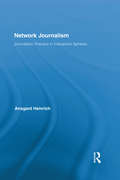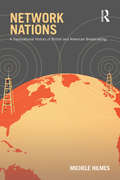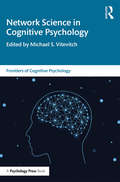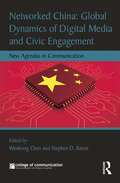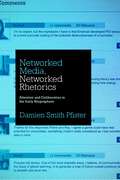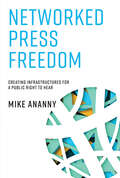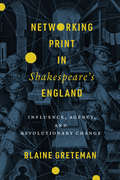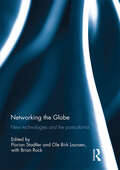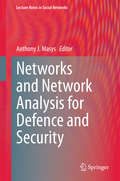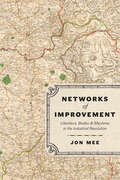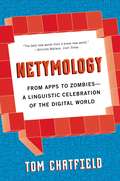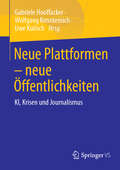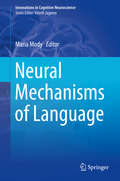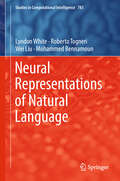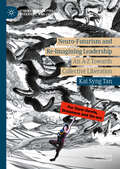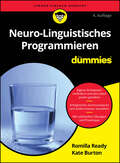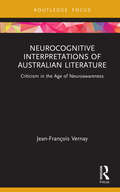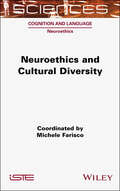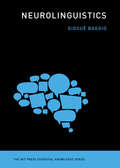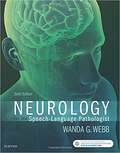- Table View
- List View
Network Journalism: Journalistic Practice in Interactive Spheres (Routledge Research in Journalism)
by Ansgard HeinrichDrawing on current theoretical debates in journalism studies, and grounded in empirical research, Heinrich here analyzes the interplay between journalistic practice and processes of globalization and digitalization. She argues that a new kind of journalism is emerging, characterized by an increasingly global flow of news as well as a growing number of news deliverers. Within this transformed news sphere the roles of journalistic outlets change. They become nodes, arranged in a dense net of information gatherers, producers, and disseminators. The interactive connections among these news providers constitute what Heinrich calls the sphere of "network journalism."
Network Morphology
by Andrew Hippisley Dunstan BrownMorphology is particularly challenging, because it is pervaded by irregularity and idiosyncrasy. This book is a study of word structure using a specific theoretical framework known as 'Network Morphology'. It describes the systems of rules which determine the structure of words by construing irregularity as a matter of degree, using examples from a diverse range of languages and phenomena to illustrate. Many languages share common word building strategies and many diverge in interesting ways. These strategies can be understood by distinguishing different notions of 'default'. The Network Morphology philosophy promotes the use of computational implementation to check theories. The accompanying website provides the computer coded version of the Network Morphology model of word structure for readers to test, customize and develop. This book will be a valuable contribution to the fields of linguistic typology and morphology and will be welcomed by researchers and graduate students in these areas.
Network Nations: A Transnational History of British and American Broadcasting
by Michele HilmesIn Network Nations, Michele Hilmes reveals and re-conceptualizes the roots of media globalization through a historical look at the productive transnational cultural relationship between British and American broadcasting. Though frequently painted as opposites--the British public service tradition contrasting with the American commercial system--in fact they represent two sides of the same coin. Neither could have developed without the constant presence of the other, in terms not only of industry and policy but of aesthetics, culture, and creativity, despite a long history of oppositional rhetoric. Based on primary research in British and American archives, Network Nations argues for a new transnational approach to media history, looking across the traditional national boundaries within which media is studied to encourage an awareness that media globalization has a long and fruitful history. Placing media history in the framework of theories of nationalism and national identity, Hilmes examines critical episodes of transnational interaction between the US and Britain, from radio’s amateurs to the relationship between early network heads; from the development of radio features and drama to television spy shows and miniseries; as each other’s largest suppliers of programming and as competitors on the world stage; and as a network of creative, business, and personal relationships that has rarely been examined, but that shapes television around the world. As the global circuits of television grow and as global regions, particularly Europe, attempt to define a common culture, the historical role played by the British/US media dialogue takes on new significance.
Network Science in Cognitive Psychology (Frontiers of Cognitive Psychology)
by Michael S. VitevitchThis volume provides an integrative review of the emerging and increasing use of network science techniques in cognitive psychology, first developed in mathematics, computer science, sociology, and physics. The first resource on network science for cognitive psychologists in a growing international market, Vitevitch and a team of expert contributors provide a comprehensive and accessible overview of this cutting-edge topic. This innovative guide draws on the three traditional pillars of cognitive psychological research–experimental, computational, and neuroscientific–and incorporates the latest findings from neuroimaging. The network perspective is applied to the fundamental domains of cognitive psychology including memory, language, problem-solving, and learning, as well as creativity and human intelligence, highlighting the insights to be gained through applying network science to a wide range of approaches and topics in cognitive psychology Network Science in Cognitive Psychology will be essential reading for all upper-level cognitive psychology students, psychological researchers interested in using network science in their work, and network scientists interested in investigating questions related to cognition. It will also be useful for early career researchers and students in methodology and related courses.
Networked China: New Agendas in Communication (New Agendas in Communication Series)
by Stephen D. Reese Wenhong ChenThe Internet and digital media have become conduits and locales where millions of Chinese share information and engage in creative expression and social participation. This book takes a cutting-edge look at the impacts and implications of an increasingly networked China. Eleven chapters cover the terrain of a complex social and political environment, revealing how modern China deals with digital media and issues of censorship, online activism, civic life, and global networks. The authors in this collection come from diverse geographical backgrounds and employ methods including ethnography, interview, survey, and digital trace data to reveal the networks that provide the critical components for civic engagement in Chinese society. The Chinese state is a changing, multi-faceted entity, as is the Chinese public that interacts with the new landscape of digital media in adaptive and novel ways. Networked China: Global Dynamics of Digital Media and Civic Engagement situates Chinese internet in its complex, generational context to provide a full and dynamic understanding of contemporary digital media use in China. This volume gives readers new agendas for this study and creates vital new signposts on the way for future research. .
Networked Media, Networked Rhetorics: Attention and Deliberation in the Early Blogosphere (Rhetoric and Democratic Deliberation #10)
by Damien Smith PfisterIn Networked Media, Networked Rhetorics, Damien Pfister explores communicative practices in networked media environments, analyzing, in particular, how the blogosphere has changed the conduct and coverage of public debate. Pfister shows how the late modern imaginary was susceptible to “deliberation traps” related to invention, emotion, and expertise, and how bloggers have played a role in helping contemporary public deliberation evade these traps. Three case studies at the heart of Networked Media, Networked Rhetorics show how new intermediaries, including bloggers, generate publicity, solidarity, and translation in the networked public sphere. Bloggers “flooding the zone” in the wake of Trent Lott’s controversial toast to Strom Thurmond in 2002 demonstrated their ability to invent and circulate novel arguments; the pre-2003 invasion reports from the “Baghdad blogger” illustrated how solidarity is built through affective connections; and the science blog RealClimate continues to serve as a rapid-response site for the translation of expert claims for public audiences. Networked Media, Networked Rhetorics concludes with a bold outline for rhetorical studies after the internet.
Networked Media, Networked Rhetorics: Attention and Deliberation in the Early Blogosphere (Rhetoric and Democratic Deliberation)
by Damien Smith PfisterIn Networked Media, Networked Rhetorics, Damien Pfister explores communicative practices in networked media environments, analyzing, in particular, how the blogosphere has changed the conduct and coverage of public debate. Pfister shows how the late modern imaginary was susceptible to “deliberation traps” related to invention, emotion, and expertise, and how bloggers have played a role in helping contemporary public deliberation evade these traps. Three case studies at the heart of Networked Media, Networked Rhetorics show how new intermediaries, including bloggers, generate publicity, solidarity, and translation in the networked public sphere. Bloggers “flooding the zone” in the wake of Trent Lott’s controversial toast to Strom Thurmond in 2002 demonstrated their ability to invent and circulate novel arguments; the pre-2003 invasion reports from the “Baghdad blogger” illustrated how solidarity is built through affective connections; and the science blog RealClimate continues to serve as a rapid-response site for the translation of expert claims for public audiences. Networked Media, Networked Rhetorics concludes with a bold outline for rhetorical studies after the internet.
Networked Press Freedom: Creating Infrastructures for a Public Right to Hear
by Mike AnannyReimagining press freedom in a networked era: not just a journalist's right to speak but also a public's right to hear. In Networked Press Freedom, Mike Ananny offers a new way to think about freedom of the press in a time when media systems are in fundamental flux. Ananny challenges the idea that press freedom comes only from heroic, lone journalists who speak truth to power. Instead, drawing on journalism studies, institutional sociology, political theory, science and technology studies, and an analysis of ten years of journalism discourse about news and technology, he argues that press freedom emerges from social, technological, institutional, and normative forces that vie for power and fight for visions of democratic life. He shows how dominant, historical ideals of professionalized press freedom often mistook journalistic freedom from constraints for the public's freedom to encounter the rich mix of people and ideas that self-governance requires. Ananny's notion of press freedom ensures not only an individual right to speak, but also a public right to hear. Seeing press freedom as essential for democratic self-governance, Ananny explores what publics need, what kind of free press they should demand, and how today's press freedom emerges from intertwined collections of humans and machines. If someone says, “The public needs a free press,” Ananny urges us to ask in response, “What kind of public, what kind of freedom, and what kind of press?” Answering these questions shows what robust, self-governing publics need to demand of technologists and journalists alike.
Networking Print in Shakespeare’s England: Influence, Agency, and Revolutionary Change (Stanford Text Technologies)
by Blaine GretemanIn Networking Print in Shakespeare's England, Blaine Greteman uses new analytical tools to examine early English print networks and the systemic changes that reshaped early modern literature, thought, and politics. In early modern England, printed books were a technology that connected people—not only readers and writers, but an increasingly expansive community of printers, publishers, and booksellers—in new ways. By pairing the methods of network analysis with newly available digital archives, Greteman aims to change the way we usually talk about authorship, publication, and print. As Greteman reveals, network analysis of the nearly 500,000 books printed in England before 1800 makes it possible to speak once again of a "print revolution," identifying a sudden tipping point at which the early modern print network became a small world where information could spread in new and powerful ways. Along with providing new insights into canonical literary figures like Milton and Shakespeare, data analysis also uncovers the hidden histories of key figures in this transformation who have been virtually ignored. Both a primer on the power of network analysis and a critical intervention in early modern studies, the book is ultimately an extended meditation on agency and the complexity of action in context.
Networking the Globe: New Technologies and the Postcolonial
by Florian Ole BirkContemporary events which have catastrophic global ramifications such as the current economic crisis or on-going conflicts across the globe are not only mediated by super-fast digital communication and information networks, but also conditioned by the presence of rapidly advancing technologies. From social network sites like YouTube and Facebook to global satellite news channels like Al Jazeera or the BBC World Service, digital forms of culture have multiplied in recent years, creating global conduits and connections which shape our lives in many ways. Bringing together an interdisciplinary group of scholars, this book addresses how new technologies have impacted discussions of identity, place and nation, and how they are shifting the parameters of postcolonial thought. Each chapter reflects on current research in its respective field, and presents new directions on the interconnection between new technologies and the postcolonial in a contemporary context. Offering a major intervention in debates around global networks, this thought-provoking collection highlights innovative research on new technologies, and its impact on a ‘postcolonial’ world. This book was originally published as a special issue of the Journal of Postcolonial Writing.
Networks and Network Analysis for Defence and Security
by Anthony J. MasysNetworks and Network Analysis for Defence and Security discusses relevant theoretical frameworks and applications of network analysis in support of the defence and security domains. This book details real world applications of network analysis to support defence and security. Shocks to regional, national and global systems stemming from natural hazards, acts of armed violence, terrorism and serious and organized crime have significant defence and security implications. Today, nations face an uncertain and complex security landscape in which threats impact/target the physical, social, economic and cyber domains. Threats to national security, such as that against critical infrastructures not only stem from man-made acts but also from natural hazards. Katrina (2005), Fukushima (2011) and Hurricane Sandy (2012) are examples highlighting the vulnerability of critical infrastructures to natural hazards and the crippling effect they have on the social and economic well-being of a community and a nation. With this dynamic and complex threat landscape, network analysis has emerged as a key enabler in supporting defence and security. With the advent of 'big data' and increasing processing power, network analysis can reveal insights with regards to structural and dynamic properties thereby facilitating greater understanding of complex networks, their entities, interdependencies, vulnerabilities to produce insights for creative solutions. This book will be well positioned to inform defence, security and intelligence professionals and researchers with regards to leading methodologies and approaches.
Networks of Improvement: Literature, Bodies, and Machines in the Industrial Revolution
by Jon MeeA new literary-cultural history of the Industrial Revolution in Britain from the late eighteenth to the mid-nineteenth centuries. Working against the stubbornly persistent image of “dark satanic mills,” in many ways so characteristic of literary Romanticism, Jon Mee provides a fresh, revisionary account of the Industrial Revolution as a story of unintended consequences. In Networks of Improvement, Mee reads a wide range of texts—economic, medical, and more conventionally “literary”—with a focus on their circulation through networks and institutions. Mee shows how a project of enlightened liberal reform articulated in Britain’s emerging manufacturing towns led to unexpectedly coercive forms of machine productivity, a pattern that might be seen repeating in the digital technologies of our own time. Instead of treating the Industrial Revolution as Romanticism’s “other,” Mee shows how writing, practices, and institutions emanating from these industrial towns developed a new kind of knowledge economy, one where local literary and philosophical societies served as important transmission hubs for the circulation of knowledge.
Networks of Improvement: Literature, Bodies, and Machines in the Industrial Revolution
by Jon MeeA new literary-cultural history of the Industrial Revolution in Britain from the late eighteenth to the mid-nineteenth centuries. Working against the stubbornly persistent image of “dark satanic mills,” in many ways so characteristic of literary Romanticism, Jon Mee provides a fresh, revisionary account of the Industrial Revolution as a story of unintended consequences. In Networks of Improvement, Mee reads a wide range of texts—economic, medical, and more conventionally “literary”—with a focus on their circulation through networks and institutions. Mee shows how a project of enlightened liberal reform articulated in Britain’s emerging manufacturing towns led to unexpectedly coercive forms of machine productivity, a pattern that might be seen repeating in the digital technologies of our own time. Instead of treating the Industrial Revolution as Romanticism’s “other,” Mee shows how writing, practices, and institutions emanating from these industrial towns developed a new kind of knowledge economy, one where local literary and philosophical societies served as important transmission hubs for the circulation of knowledge.
Netymology: A Linguistic Celebration of the Digital World
by Tom ChatfieldComposed of 100 bite-sized entries of 400 to 600 words each, Netymology weaves together stories, etymologies and analyses around digital culture's transformation and vocabulary. Chatfield presents a kaleidoscopic, thought-provoking tour through the buried roots of the symbols, speech, and mannerisms we have inherited from the digital age: from the @ and Apple symbols, to HTML and Trojan horses, to the twisted histories of new forms of slang, memes, text messages and gaming terms; how language itself is being shaped by technology, how it is changing us.
Neue Plattformen – neue Öffentlichkeiten: KI, Krisen und Journalismus
by Gabriele Hooffacker Wolfgang Kenntemich Uwe KulischAlgorithmen und Künstliche Intelligenz wie die generative Sprach-KI ChatGPT übernehmen journalistische und publizistische Aufgaben – bei der Recherche, bei Produktion und Distribution. Wie ist es um die Zukunft des Journalismus unter den rasant sich verändernden Rahmenbedingungen bestellt? Worauf müssen sich Medienschaffende und Rezipienten einstellen? Wie können Medien auch in Krisenzeiten möglichst unabhängig bleiben und weiterhin Voraussetzung für eine funktionierende Demokratie sein? Der Band versammelt Beiträge zur Fachtagung "Neue Plattformen – neue Öffentlichkeiten" im September 2023 an der HTWK Leipzig.
Neuere Deutsche Literaturwissenschaft für Dummies (Für Dummies)
by Michael WillNeuere Deutsche Literaturwissenschaft für Dummies ist eine modular angelegte, lebendig präsentierte und leicht verständliche Alternative zu bisherigen literaturwissenschaftlichen Einführungsbüchern. Es hilft unnötige Barrieren überwinden und macht das literaturwissenschaftliche Denken und Grundwissen für Studienanfänger zugänglich, egal, welche Voraussetzungen sie mitbringen. "Neuere Deutsche Literaturwissenschaft für Dummies" präsentiert kompetent und unterhaltsam alle wichtigen Bereiche des Faches (Begriffliche Grundlagen, Textanalyse, Literaturgeschichte, Methodik, Arbeitstechniken) bis zum B.A.-Niveau und legt das Fundament für ein weiterführendes Studium.
Neues von der Insel: Englische Literatur und Kultur der Frühen Neuzeit in deutscher Übersetzung (Übersetzungskulturen der Frühen Neuzeit #2)
by Jörg Wesche Silvia Serena Tschopp Franz FromholzerEin interdisziplinärer Band im Open-Access: Die Aufwertung der Volkssprachen in der Frühen Neuzeit führte zu einer Intensivierung und internationalen Öffnung der europäischen Übersetzungskultur. Der Gebrauch des Englischen bleibt in dieser Zeit allerdings weitgehend auf die Insel beschränkt, während die Sprache auf dem Kontinent noch wenig geläufig ist. Erst seit dem 18. Jahrhundert gewinnt sie an internationaler Bedeutung und steigt schließlich zur modernen Weltsprache auf. Der Band fokussiert auf die vormoderne Situation und untersucht in 19 literatur-, kunst-, philosophie- und frömmigkeitsgeschichtlichen Fallstudien die deutsche Rezeption der frühneuzeitlichen englischen Literatur und Kultur. Mit Blick auf das bislang unzureichend erforschte deutsch-englische Interaktionsfeld erhellt er ebenso ausgewählte Personen, Institutionen und Wissensfelder wie Werkübertragungen, Gattungstransformationen und Übersetzungspraktiken, die den bereits in dieser Zeit bemerkenswert dichten Austausch zwischen England und dem Alten Reich prägten. Welche Netzwerke und Medien ermöglichten z.B. die Rezeption einflussreicher Denker und Dichter wie Bacon, Hobbes oder Milton im deutschsprachigen Raum; wie kam es gleichsam im Mutterland des Protestantismus zu einer auffallend intensiven Übersetzung englischer Erbauungsliteratur; welche Rolle spielten Parallelübersetzungen oder auch Übersetzungen aus zweiter Hand, etwa dort, wo der kulturelle Transfer über eine dritte Sprache wie das Französische oder Niederländische erfolgte? Auf solche Fragen werden im Band neue Antworten gegeben.
Neural Mechanisms of Language
by Maria ModyThis important volume brings together significant findings on the neural bases of spoken language -its processing, use, and organization, including its phylogenetic roots. Employing a potent mix of conceptual and neuroimaging-based approaches, contributors delve deeply into specialized structures of the speech system, locating sensory and cognitive mechanisms involved in listening and comprehension, grasping meanings and storing memories. The novel perspectives revise familiar models by tracing linguistic interactions within and between neural systems, homing in on the brain's semantic network, exploring the neuroscience behind bilingualism and multilingual fluency, and even making a compelling case for a more nuanced participation of the motor system in speech. From these advances, readers have a more three-dimensional picture of the brain--its functional epicenters, its connections, and the whole--as the seat of language in both wellness and disorders. Included in the topics: #65533; The interaction between storage and computation in morphosyntactic processing. #65533; The role of language in structure-dependent cognition. #65533; Multisensory integration in speech processing: neural mechanisms of cross-modal after-effect. #65533; A neurocognitive view of the bilingual brain. #65533; Causal modeling: methods and their application to speech and language. #65533; A word in the hand: the gestural origins of language. Neural Mechanisms of Language presents a sophisticated mix of detail and creative approaches to understanding brain structure and function, giving neuropsychologists, cognitive neuroscientists, developmental psychologists, cognitive psychologists, and speech/language pathologists new windows onto the research shaping their respective fields.
Neural Representations of Natural Language (Studies in Computational Intelligence #783)
by Wei Liu Roberto Togneri Lyndon White Mohammed BennamounThis book offers an introduction to modern natural language processing using machine learning, focusing on how neural networks create a machine interpretable representation of the meaning of natural language. Language is crucially linked to ideas – as Webster’s 1923 “English Composition and Literature” puts it: “A sentence is a group of words expressing a complete thought”. Thus the representation of sentences and the words that make them up is vital in advancing artificial intelligence and other “smart” systems currently being developed. Providing an overview of the research in the area, from Bengio et al.’s seminal work on a “Neural Probabilistic Language Model” in 2003, to the latest techniques, this book enables readers to gain an understanding of how the techniques are related and what is best for their purposes. As well as a introduction to neural networks in general and recurrent neural networks in particular, this book details the methods used for representing words, senses of words, and larger structures such as sentences or documents. The book highlights practical implementations and discusses many aspects that are often overlooked or misunderstood. The book includes thorough instruction on challenging areas such as hierarchical softmax and negative sampling, to ensure the reader fully and easily understands the details of how the algorithms function. Combining practical aspects with a more traditional review of the literature, it is directly applicable to a broad readership. It is an invaluable introduction for early graduate students working in natural language processing; a trustworthy guide for industry developers wishing to make use of recent innovations; and a sturdy bridge for researchers already familiar with linguistics or machine learning wishing to understand the other.
Neuro-Futurism and Re-Imagining Leadership: An A-Z Towards Collective Liberation (Studies in Mobilities, Literature, and Culture)
by Kai Syng TanThis book is a rip-roaring manifesto that re-claims ways to think about and do ‘leadership’. Colliding mobilities, neuro-queering, the arts and culture, critical leadership studies, social justice, creative pedagogy, futurity and Daoist cosmology for the first time, the book proposes ‘neuro-futurism’ as a beyond-colonial, heuristic change-making tool-kit for individuals and institutions. Celebrating the Dangerous, Demeaning and Dirty labour of Deviant/Defiant culture-workers often side-lined in (leadership) scholarship across 26 break-neck chapters and 39 images, this book challenges white-supremacist-cis-het-neuro-normative-capitalist-patriarchal forms of power and knowledge. Punchy, punching up and pulling no punches, it is a call to arms, feet, sole-soul, to co-create tables/houses/worlds that profit (neuro-)divergent people, planet, poetry and play. The deadline is 2050, so we’re running out of time. Are you ready for an extra-ordinary adventure?
Neuro-Linguistisches Programmieren für Dummies (Für Dummies)
by Kate Burton Romilla ReadyÖffnen Sie Ihr Denken für neue M??glichkeiten! M??chten Sie andere Menschen besser verstehen und sich ihnen gegenüber besser verständlich machen? Dann ist dieses Buch genau das richtige für Sie. Romilla Ready und Kate Burton zeigen Ihnen, wie Sie mit NLP Ihre Kommunikation mit anderen erfolgreich gestalten k??nnen und Ihre Ziele leichter erreichen. Sie erfahren, was es mit »Landkarten«, »Ankern«, »Zeitreisen« oder »Rapport« auf sich hat, und werden schon bald merken, wie Sie einen neuen Blick auf Ihre Umwelt werfen und wie positiv sich Ihre Kommunikation mit anderen entwickelt. Sie erfahren Wie Sie Ihre Ziele mit neuer Energie und Überzeugung erreichen Wie Sie sich Geh??r für Ihre Botschaft verschaffen Wie Sie Zweifel überwinden und mehr Zufriedenheit erlangen
Neurocognitive Interpretations of Australian Literature: Criticism in the Age of Neuroawareness (Routledge Focus on Literature)
by Jean-François VernayThis unique book on neurocognitive interpretations of Australian literature covers a wide range of analyses by discussing Australian Literary Studies, Aboriginal literary texts, women writers, ethnic writing, bestsellers, neurodivergence fiction, emerging as well as high- profile writers, literary hoaxes and controversies, book culture, and LGBTIQA+ authors, to name a few. It eclectically brings together a wide gamut of cognitive concepts and literary genres at the intersection of Australian literary studies and cognitive literary studies in the first single-author volume of its kind. It takes Australian Literary Studies into the age of neuroawareness and provides new pathways in contemporary criticism.
Neuroethics and Cultural Diversity
by Michele FariscoThere is a growing discussion concerning the relationship between neuroethical reflections and cultural diversity, which is among the most impactful factors in shaping neuroethics, both as a scientific discipline and a social enterprise. The impacts of culture on science and its public perception are particularly relevant to neuroethics, which aims to facilitate the creation of an interface between neuroscience and society at large. Time is ripe for neuroethics to review the influence of the culturally specific contexts from which it originated (i.e. North America and Western Europe) and to also include other cultural perspectives in the discussion. This book illustrates a convergent approach among different cultures in identifying the main issues raised by neuroscience and emerging technologies. This should be taken as a starting point for advancing in the search for shared solutions, which are, if not definitive, at least sufficiently reliable to be translated into democratic deliberative processes.
Neurolinguistics (The MIT Press Essential Knowledge series)
by Giosue BaggioAn accessible introduction to the study of language in the brain, covering language processing, language acquisition, literacy, and language disorders.Neurolinguistics, the study of language in the brain, describes the anatomical structures (networks of neurons in the brain) and physiological processes (ways for these networks to be active) that allow humans to learn and use one or more languages. It draws on neuroscience, linguistics—particularly theoretical linguistics—and other disciplines. In this volume in the MIT Press Essential Knowledge series, Giosuè Baggio offers an accessible introduction to the fundamentals of neurolinguistics, covering language processing, language acquisition, literacy, and speech and language disorders. Baggio first surveys the evolution of the field, describing discoveries by Paul Broca, Carl Wernicke, Noam Chomsky, and others. He discusses mapping language in &“brain time&” and &“brain space&” and the constraints of neurolinguistic models. Considering language acquisition, he explains that a child is never a &“blank slate&”: infants and young children are only able to acquire specific aspects of language in specific stages of cognitive development. He addresses the neural consequences of bilingualism; literacy, discussing how forms of visual language in the brain differ from forms of auditory language; aphasia and the need to understand language disorders in behavioral, functional, and neuroanatomical terms; neurogenetics of language; and the neuroethology of language, tracing the origins of the neural and behavioral building blocks of human linguistic communication to the evolution of avian, mammalian, and primate brains.
Neurology for the Speech-Language Pathologist (Sixth Edition)
by Wanda G. WebbThe concise, easy-to-understand Neurology for the Speech-Language Pathologist, 6th Edition provides students and clinicians with a practical guide for the study and understanding of neurology in speech-language pathology (SLP). Correlated with clinical syndromes and diseases seen in SLP, it gives you a solid understanding of the nervous system, including: development of the nervous system, organization of the brain, protective mechanisms, descending motor and ascending sensory pathways, and cranial nerves. New content, case studies, and a strong clinical focus make this new edition essential as you move into practice.
